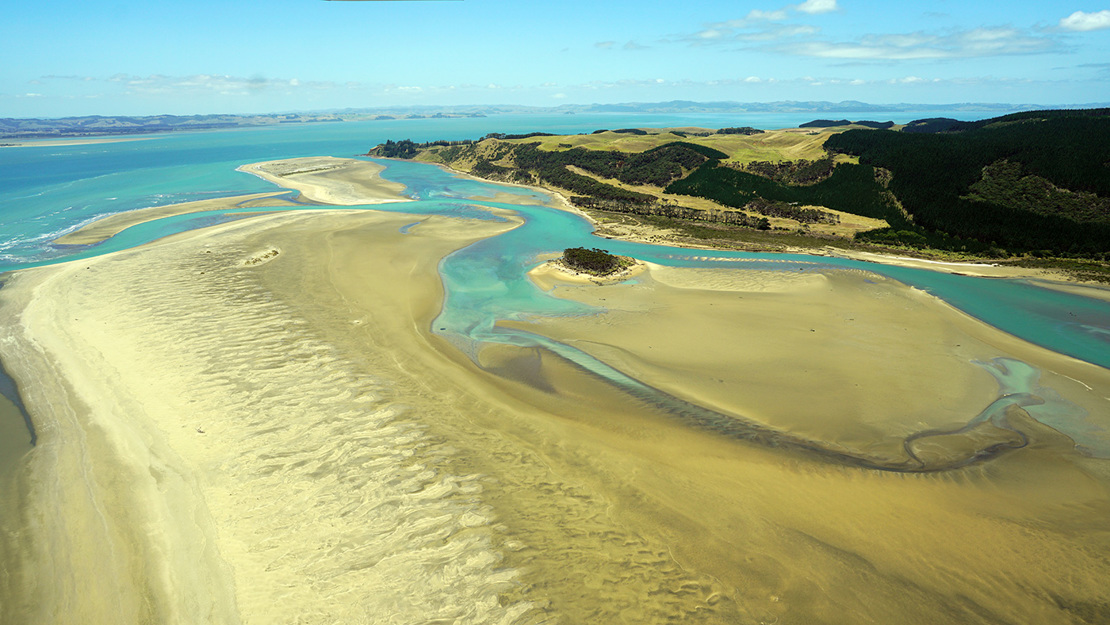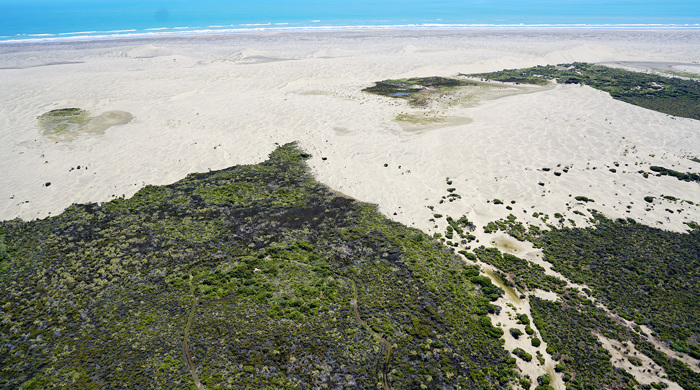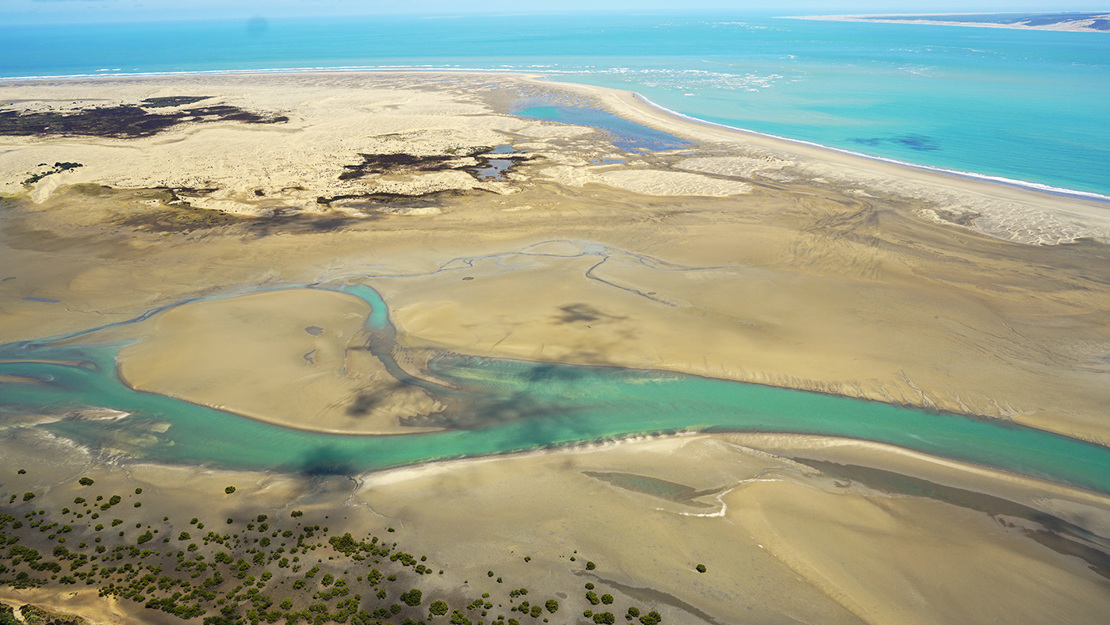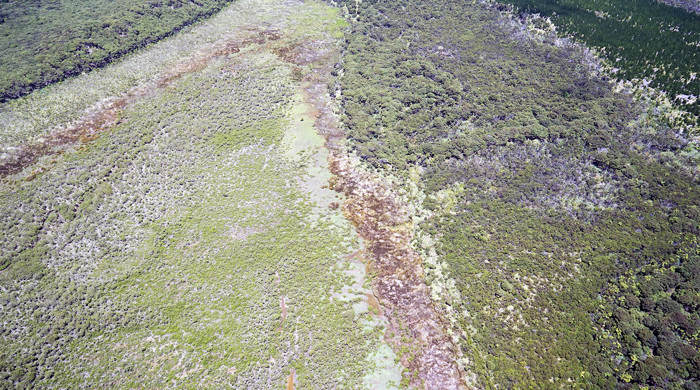Papakanui-Waionui
Papakanui-Waionui is a place of very high biodiversity value and one of the few remaining nesting sites for tara iti (fairy tern). It includes extensive areas of dune lands, dune forest and freshwater wetlands.
Size: 2257 hectares
Site description
The Papakanui–Waionui biodiversity focus area is located at the northern end of the South Head peninsula. It includes the large Papakanui Conservation Area and other smaller areas of reserve land administered by the Department of Conservation. The biodiversity value of this area is extremely high, both on an ecosystem and species level.
The Papakanui dunefield and spit are recognised as an Outstanding Natural Feature in the Auckland Unitary Plan.

Key ecosystems
Papakanui is one of the largest and most extensive areas of sand dunes with both foredune and back dune plant communities (DN2 and DN5) in the Tāmaki Makaurau / Auckland region.
It also has one of the largest remaining dune forest (WF5) remnants in the region. The dune forest is located next to the Waionui Inlet and there are other smaller remnants on Tīpare / Ti Tree Island at the mouth of Waionui Inlet and within the nearby pine forest.
In the upper reaches of the Waionui Inlet is raupō-dominated freshwater wetland (WL19). This grades into estuarine vegetation (SA1) in the lower reaches of the inlet.

Native birds
This large, remote area provides important habitat and food sources for many species, including:
- tara iti (fairy tern)
- matuku hūrepo (Australasian bittern)
- mātātā (fernbird).
Papakanui is one of the only four remaining regular breeding sites for tara iti (fairy tern). Tara iti are the most endangered of all New Zealand’s native birds.
Matuku hūrepo are a cryptic (well camouflaged), rarely seen wetland bird species. They have a threat status of Threatened - Nationally Critical.
Fernbird, another well camouflaged wetland bird is more often heard than seen. They have a national threat status of At Risk – Declining.

Threats
The impacts of feral deer are an ongoing issue. Deer have significantly impacted the native vegetation through browse of palatable species.
Invasive weeds such as Mexican devil and pampas in the wetlands threaten the long-term viability of the native-dominated vegetation and habitats.
Illegal off-road vehicles are a threat to ground nesting shorebirds and dune vegetation.
The Department of Conservation undertakes predator control for the protection of tara iti (fairy tern).




